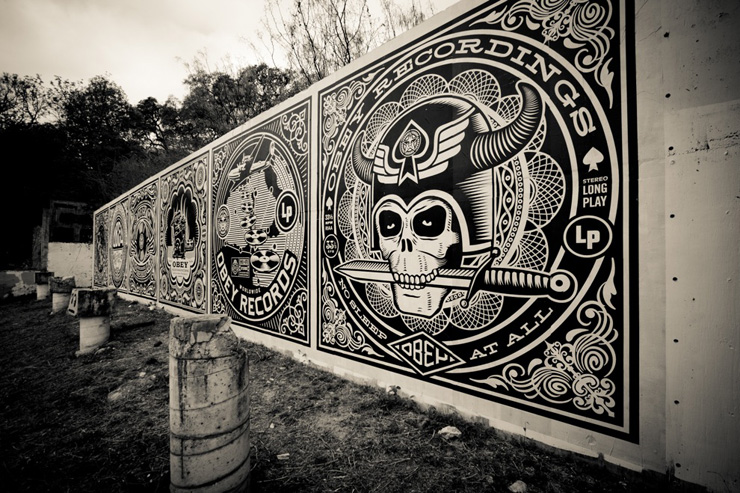
Image Credit: Geoff Hargadon
This week on viz. we'll be exploring graffiti culture in Austin and beyond, beginning with an interactive graffiti map that we'll use to begin archiving graffiti in and around the community in which we live. Please visit and contribute!
In this post, I'd like to introduce some issues central to reading graffiti as both a performative and political act. I take as my primary examples the HOPE Outdoor Gallery on 11th St. and Baylor in Austin's Clarksville neighborhood and graffiti from inside a now-demolished bicycle shop that once operated in West Campus. Using these examples, I'd like to explore definitions of graffiti and raise questions of property and ownership in public spaces. Join our interactive mapping project and follow our posts this week as we take a closer look at Austin graffiti.
The HOPE Outdoor gallery was founded 2011 on the site of an abandoned condominium construction site. At 2011’s SXSW festival, Shepard Fairey, renowned street artist and creator of the iconic HOPE poster for the Obama campaign, contributed the first murals, pictured above. The project hopes “to provide muralists, graffiti artists and community groups the opportunity to display large scale art pieces driven by inspirational, positive and educational messaging.”
Most people in Austin, however, refer to the installation as the “free wall” or the “Baylor street art wall.” Within weeks, Fairey’s mural was tagged by local graffiti artists, and the HOPE foundation began to lose control of the mural. Although both the property owners and HOPE make consistent attempts to control contributions to the site, its current façade is a constantly-rotating parade of vibrant Austin graffiti culture alongside (and often, on top of) commissioned art.
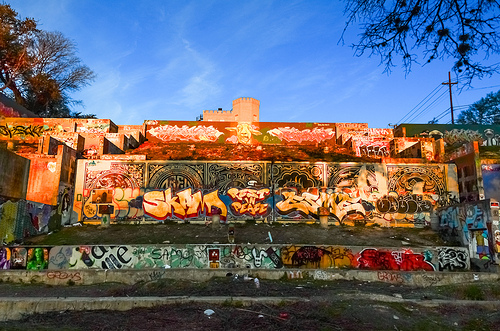
The remains of Fairey's mural, late 2011 Image Credit: Super Sonic Electronic
Such political battles represent a larger discussion of “street art” vs. graffiti. “Street artists” often cite their desire to escape the negative connotations attached to graffiti and those who create graffiti, who go by a variety of names (tagger, bomber, writer, or simply artist). The editor of a LA street art blog Melrose & Farfax represents this point of view. She explains, "Both graffiti and street art use the re-appropriation of public space. But with graffiti you are limited to what you can do with a spray can on the spot. Street art might employ some of the application techniques, but most often, it is a finished product that is brought ready-made to the location, so the artist's message is much more developed. Street art is not so much about making a name and leaving a mark as it is getting people to interact with and view something in a new way, and that is a big difference."
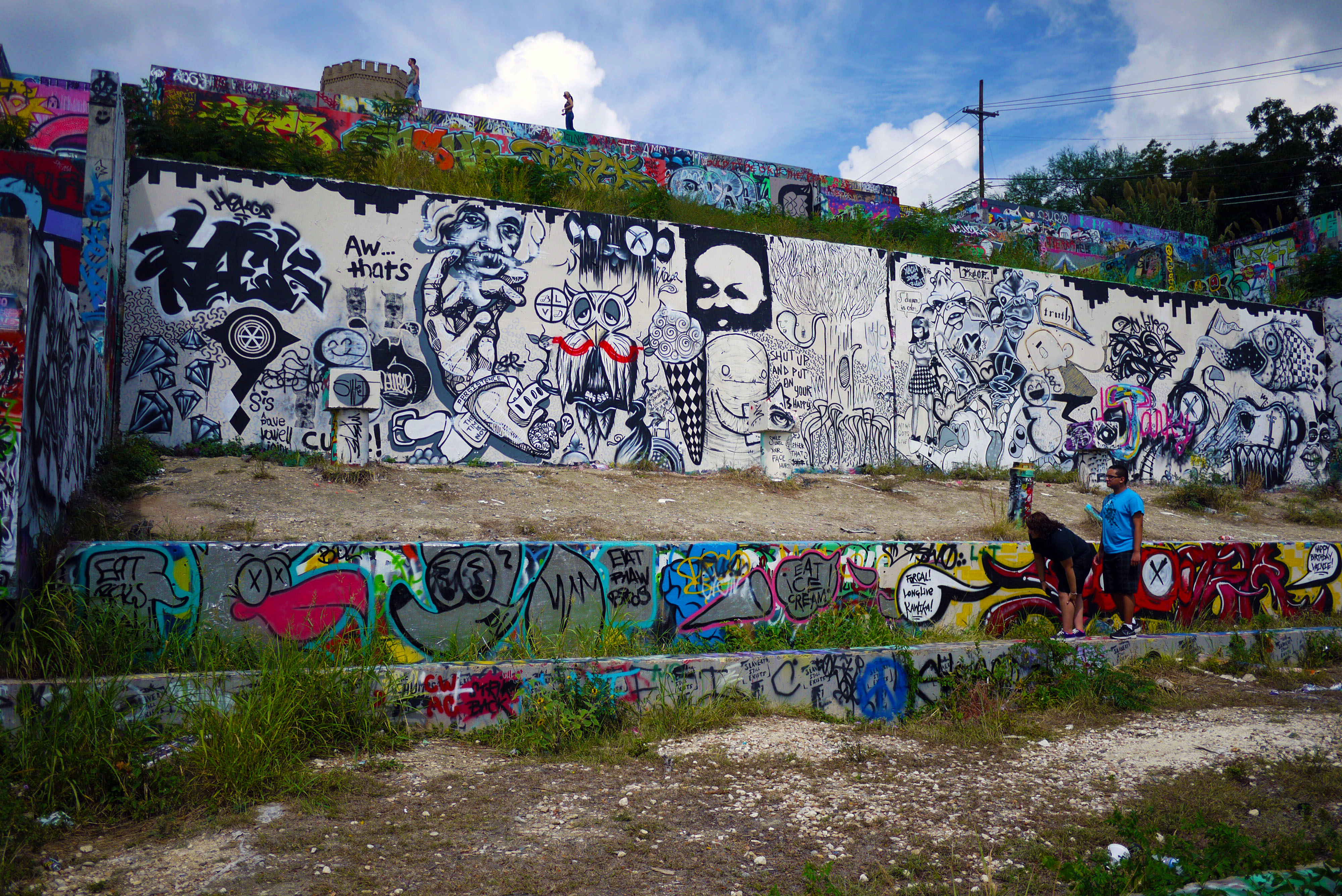
Current state of Fairey's mural as of Sept. 2013. Image Source: Personal photograph. Click to enlarge.
Street art, at least, in the case of the "free wall," represents the commissioned, publicly-sanctioned offspring of graffiti culture. And the battle between graffiti and street art on Austin's Baylor St. represents a larger battle over ownership of public spaces. That conversation often revolves around aesthetic value--that is, that public art is of higher value to the community (and, less abstractly, the surrounding property) if it comes from a commissioned artist. Differences in quality are difficult to determine and always rely on subjective aesthetic criteria, though attempting to set out those criteria clearly demonstrates that the aesthetic and the political go hand-and-hand in public spaces. Often, the "quality" of an art installation relies heavily on our ability to name the artist. It is anonymous or psuedonymous art that holds less aesthetic value. Graffiti shows us in clear and interesting ways the connection between art and power.
Issues of ownership influence indoor spaces as much as outdoor ones. I'd like to close by raising some questions about ownership as well as definition. The images below come from the shop bathroom and workspace of one of the oldest bicycle shops in Austin which closed in May of 2013, citing high property taxes in West Campus. The building that once housed the shop was demolished within days to make room for a student-housing high rise.
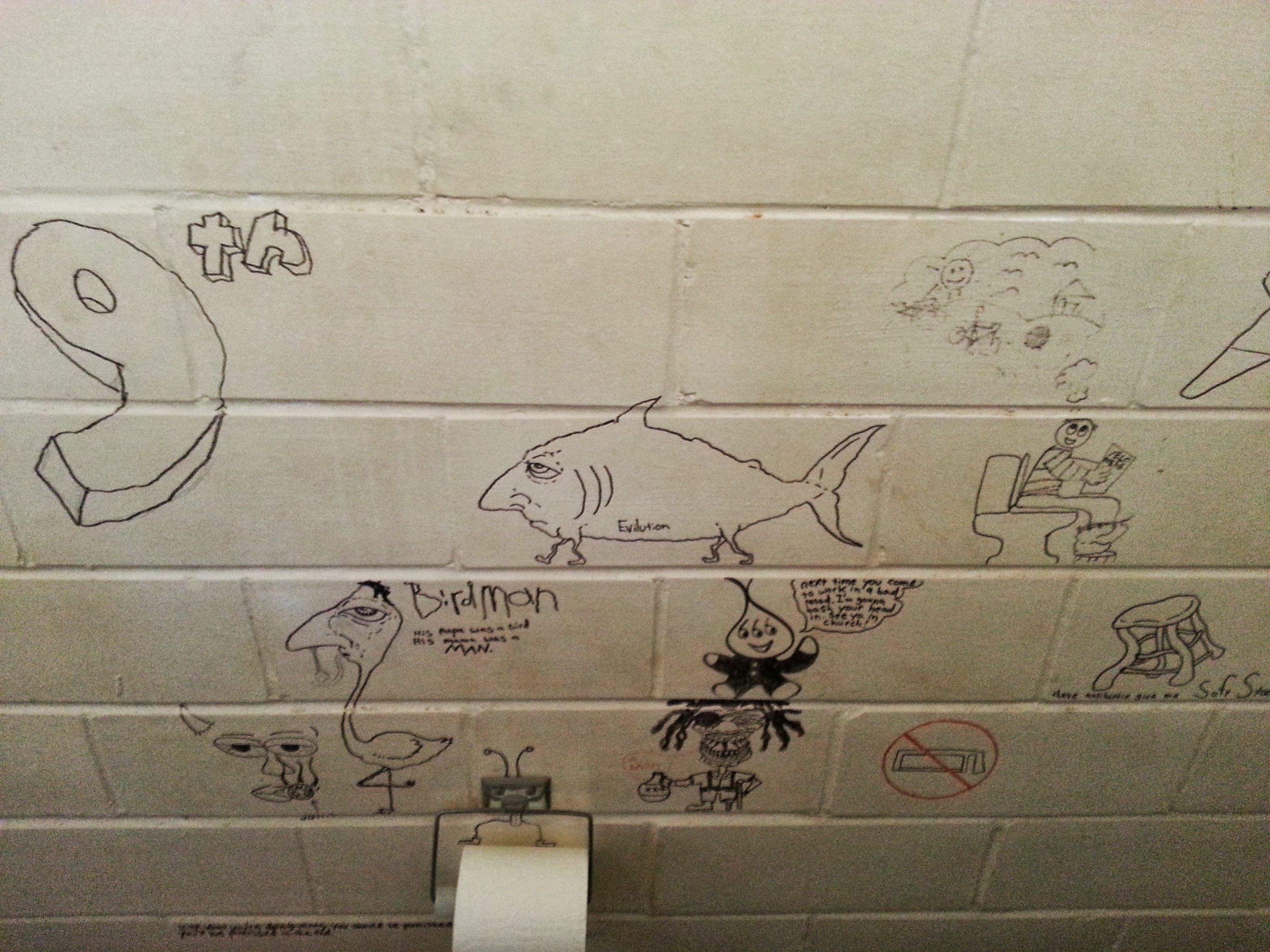
Image Credit: RED
Unlike most photographs of graffiti, this documentation represents not a stage of graffiti production on a particular architectural object but the final stage of graffiti in this place. Rather than reminding us only of the ephemeral nature of street art, it points to the temporality of urban landscapes, as well.
As far as I know, this is the only surviving photograph of this graffiti--a lone entry in an archive. Bathroom graffiti is a peculiar example of public art. It holds a particular type of captive audience, but exists in a private space within the public (that is, the public space of the restroom itself.) This particular graffiti came from a bathroom that was used exclusively by bike mechanics and perhaps a few special regulars, but like most bathroom graffiti, still functions on some level as an insider text.
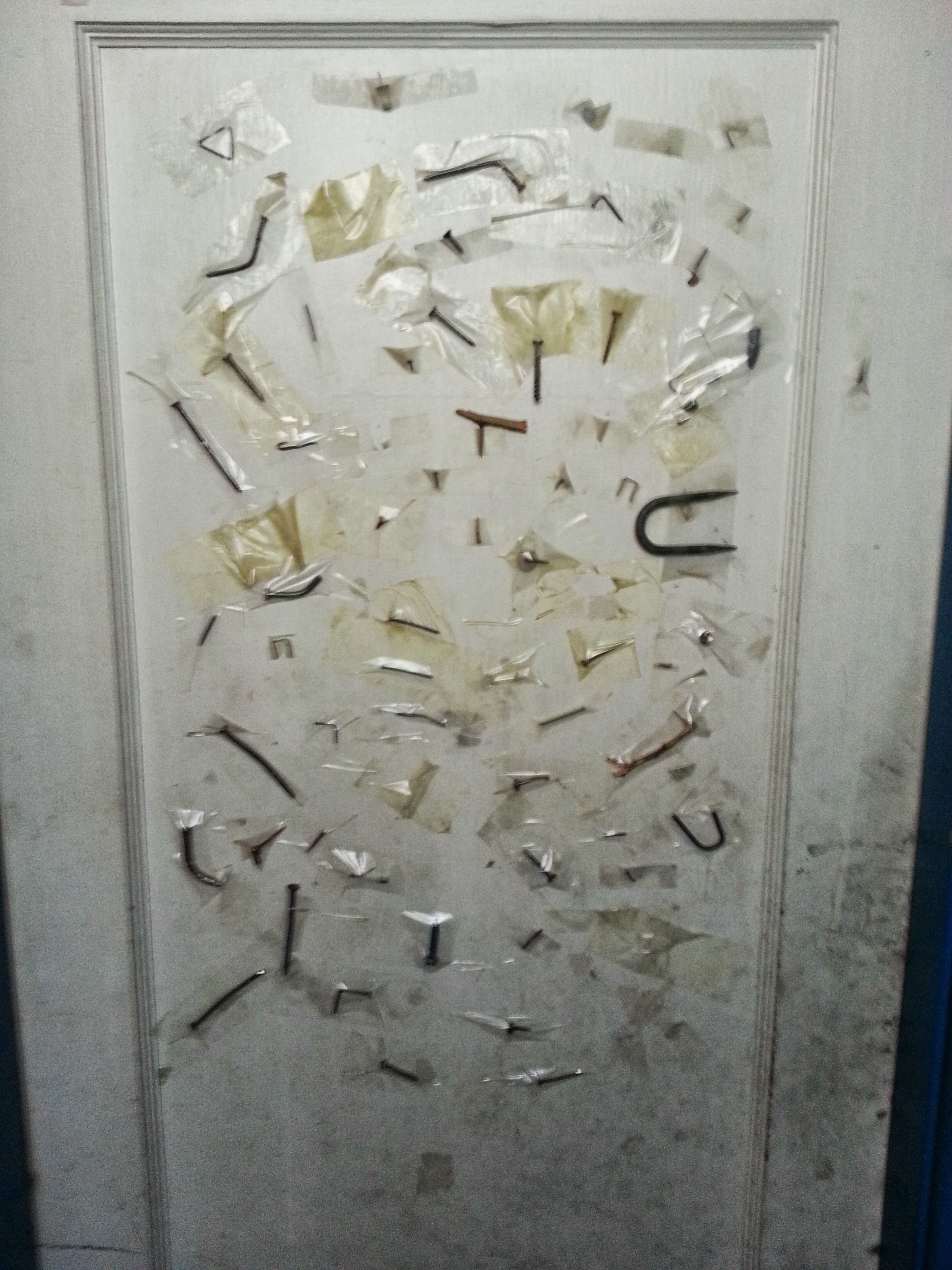
Image Credit: RED
I'd like to close with this image in the hopes that it can help us both expand and refine a definition of graffiti. This is the mechanics' bathroom door, heavily decorated with objects removed from punctured tires over the course of many years. Like the bathroom wall, it is an ever-changing landscape that documents specific events and experiences to a larger audience. If graffiti is collaborative, largely anonymous or pseudonymous inscription geared toward communicating presence and experience in a public space, the nail wall certainly qualifies--it in fact goes beyond the experience of the mechanics and additionally documents the experience (and presence!) of the cycling community of which they are a part.
For more on graffiti, see this week's other contributions:
Graffiti? I'll Know It When I See It. Or Not.
Graffiti as Advertisement
Jeremiah the Innocent Icon





Recent comments
2 years 29 weeks ago
2 years 44 weeks ago
2 years 44 weeks ago
2 years 50 weeks ago
3 years 4 weeks ago
3 years 4 weeks ago
3 years 4 weeks ago
3 years 6 weeks ago
3 years 6 weeks ago
3 years 6 weeks ago